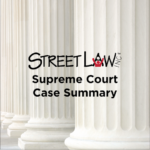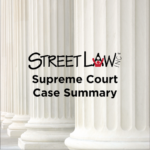Do detainees at Guantanamo Bay have the constitutional right to challenge the legality of their confinement using a writ of habeas corpus? This case summary shows how the Supreme Court answered that question in 2008.
Hamdi v. Rumsfeld (2004)
Can a U.S. citizen captured in Afghanistan, who the President claims was an “enemy combatant,” be detained indefinitely? This case summary shows how the Supreme Court answered that question in 2004.
Rasul v. Bush (2004)
Rumsfeld v. Padilla (2004)
Running Toward Danger Video Lesson
This video tells the story of Sept. 11, 2001, in New York City through primary source interviews and news footage. Ask your students to explain the role of journalists in covering catastrophes.

